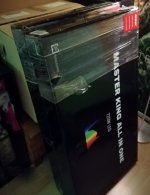early4surely
Member
Can someone explain what is the difference between LED's powered by driver and LED's powered by an electronic ballast?
Nowadays, LED's powered by ballast are offered at a much lower price compared to LED's powered by driver. What justifies the much higher price for drivers?
I understand that drivers have a better capacity to regulate the power supplied to the LED's, and as a result the driver and the lights will last longer. I would like to understand how durable the ballast will be, and how it may impact the durability of my lights. I tried asking chat gpt, and it indicated an approximate 10-20% loss in LED lifespan. Given the progress in LED lights over the years, II am willing to sacrifice up to 20% durability, as I assume I will anyway want to upgrade before my lights get too old.
Hope someone can chime in and shed some light on this savings opportunity.
Keep it Terry
Nowadays, LED's powered by ballast are offered at a much lower price compared to LED's powered by driver. What justifies the much higher price for drivers?
I understand that drivers have a better capacity to regulate the power supplied to the LED's, and as a result the driver and the lights will last longer. I would like to understand how durable the ballast will be, and how it may impact the durability of my lights. I tried asking chat gpt, and it indicated an approximate 10-20% loss in LED lifespan. Given the progress in LED lights over the years, II am willing to sacrifice up to 20% durability, as I assume I will anyway want to upgrade before my lights get too old.
Hope someone can chime in and shed some light on this savings opportunity.
Keep it Terry



